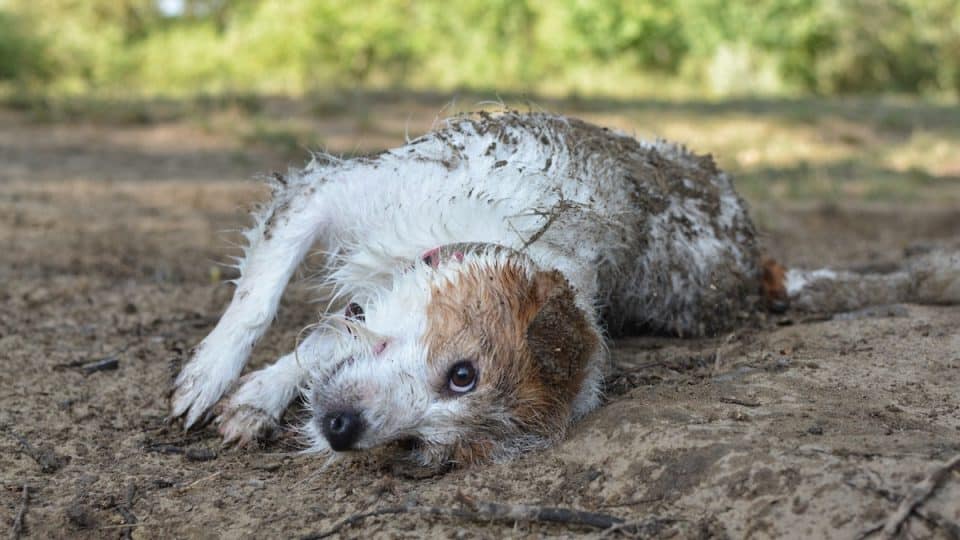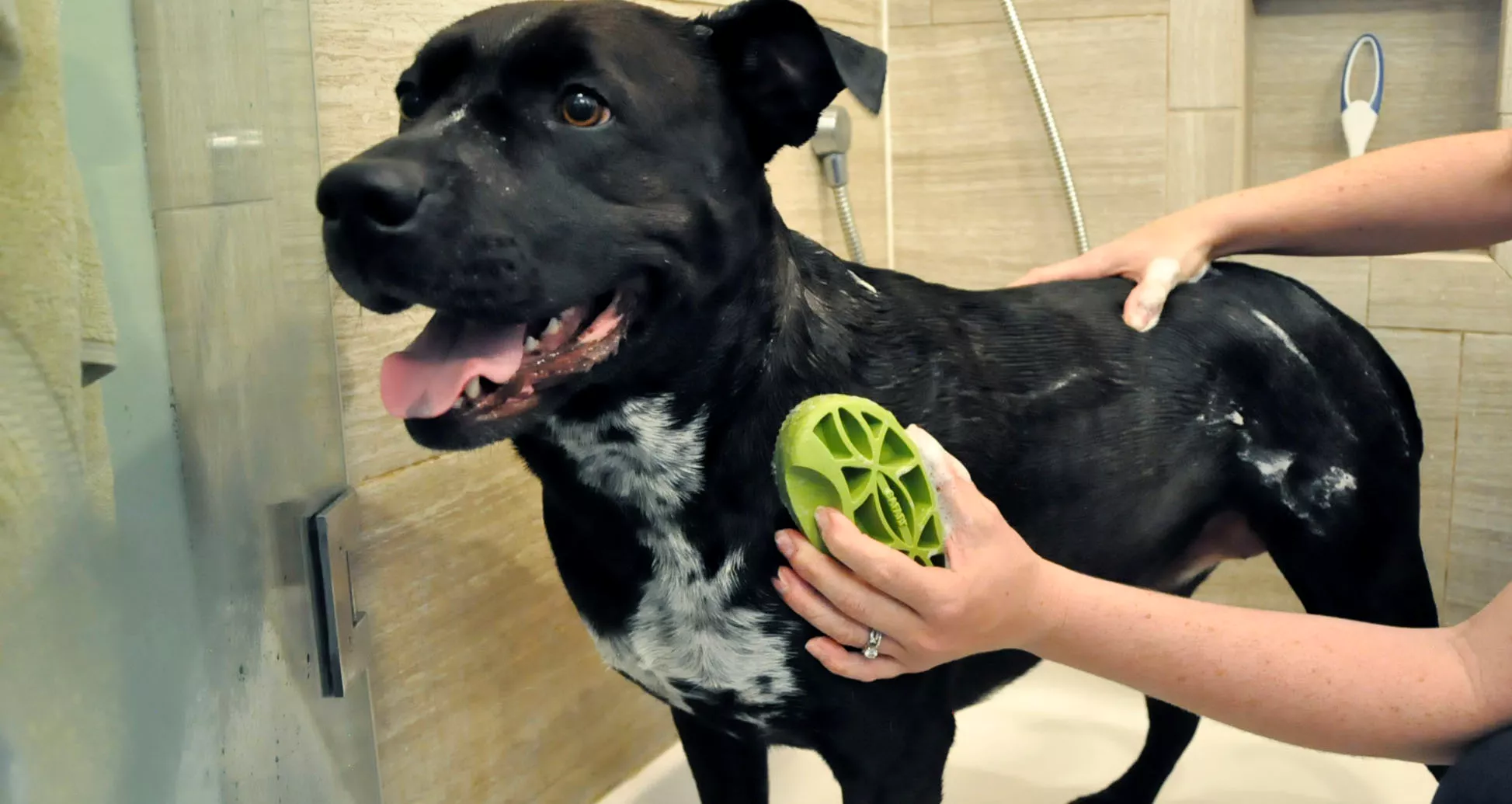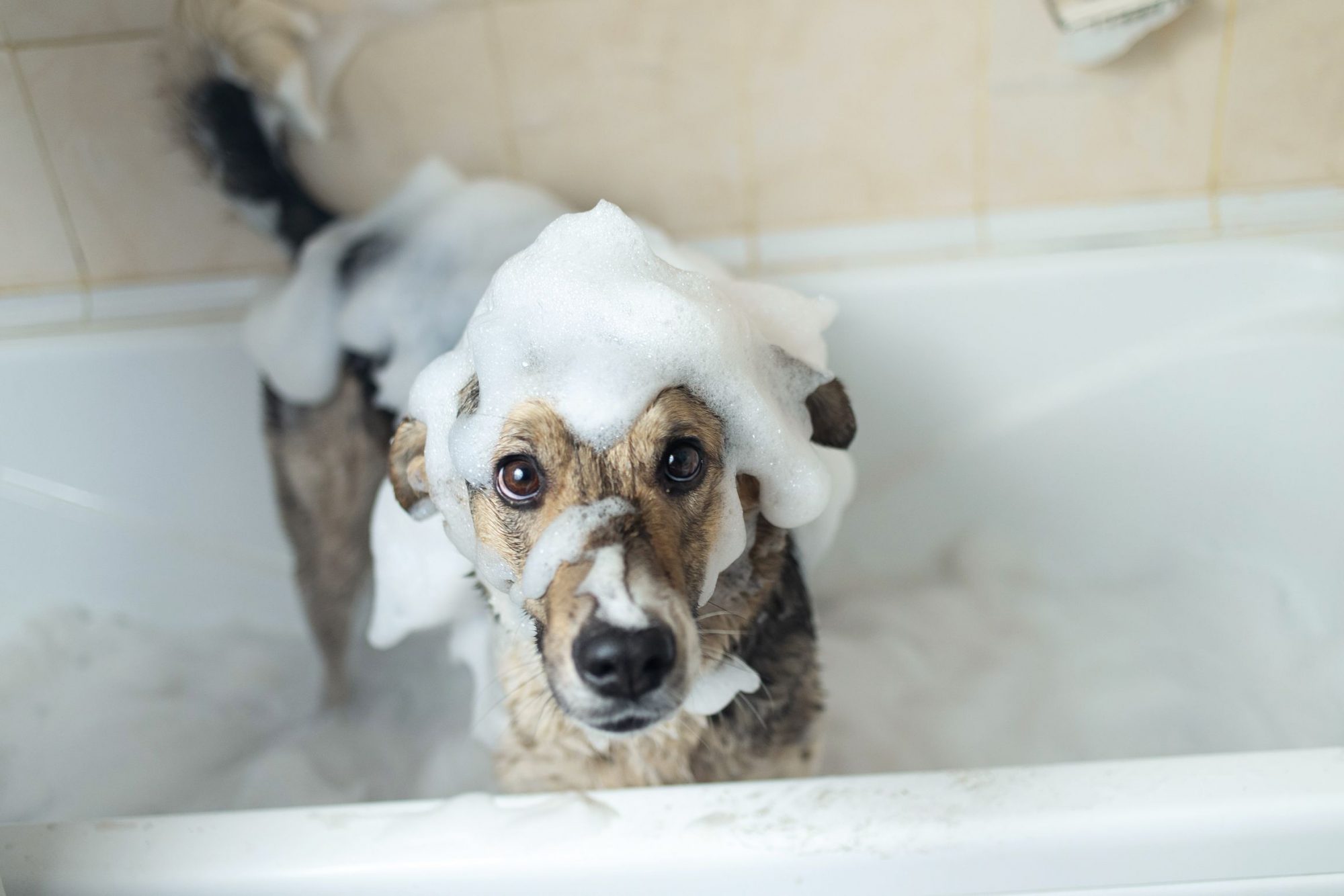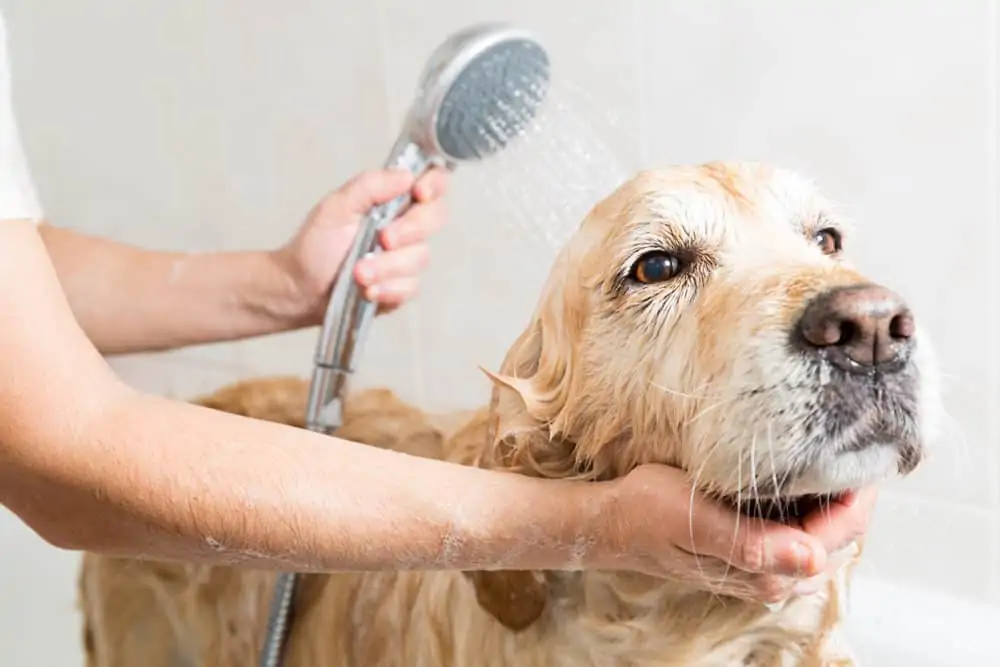If you’re anything like me you love snuggling up with your dog—until that not-so-pleasant smell hits. Even the happiest pups can start to stink after a day of play or a romp in the park. While it’s normal for dogs to have their own scent sometimes those odors can get out of hand.
I’ve learned that a few simple changes can make a big difference and keep your furry friend smelling fresh. Whether you’re dealing with a doggy odor emergency or just want to enjoy more cuddle time without the stink I’ve got some easy tips to help. Let’s dive into what really works to make your dog smell better and your home feel fresher.
Common Causes of Dog Odor

Common-Causes-of-Dog-Odor
Dog odor often comes from specific biological or environmental sources. I notice the most common factors involve skin conditions, oral hygiene, diet, and contact with outdoor elements.
- Skin Infections or Allergies
Yeast infections, bacterial infections, and allergies often cause strong smells. I see these more in breeds like Bulldogs or Cocker Spaniels with skin folds or allergies.
- Poor Oral Health
Gum disease, plaque buildup, or an infected tooth create noticeable bad breath. I find dental neglect most common in older dogs or those eating only soft food.
- Ear Infections
Floppy-eared breeds like Basset Hounds or Cocker Spaniels frequently get ear infections. I notice foul odors and see discharge or swelling in affected dogs.
- Unclean Coats or Rolling in Odors
Most outdoor dogs pick up dirt, oil, and odors from soil or garbage. I often see retrievers or terriers with strong outdoor odors after rolling in grass or mud.
- Anal Gland Issues
Small breeds like Chihuahuas and Dachshunds often develop full or infected anal glands, leading to a pungent fishy smell.
- Diet or Digestive Issues
Irritated stomachs or allergies to proteins such as beef or chicken sometimes cause body odor. Poor-quality food or rapid diet changes also add to the smell.
Comparison Table: Common Dog Odor Causes
| Cause | Description | Breeds/Examples | Typical Odor |
|---|---|---|---|
| Skin Infections | Yeast/bacteria on skin or folds | Bulldogs, Spaniels | Musty, sour |
| Oral Health Issues | Plaque, gingivitis, dental infection | Older dogs, soft food | Rotting, foul |
| Ear Infections | Bacteria/yeast in ears, wax buildup | Hounds, Spaniels | Yeasty, pungent |
| Dirty Coats | Dirt, oils, environmental contaminants | Outdoor-active breeds | Earthy, strong |
| Anal Gland Problems | Blocked, infected, or leaking anal glands | Small/toy breeds | Fishy, strong |
| Diet/Digestive Issues | Food allergies, poor-quality feed, sensitive stomachs | All breeds | Varies (doggy/body) |
Quick Reference: Signs of Odor Causes
| Symptom | Likely Cause |
|---|---|
| Musty skin smell | Skin infection/allergy |
| Bad breath | Oral health issue |
| Smelly or itchy ears | Ear infection |
| Fishy back-end odor | Anal gland problem |
| General strong body odor | Dirty coat/diet issue |
Essential Grooming Tips for a Fresher Dog

Essential-Grooming-Tips-for-a-Fresher-Dog
Keeping dog odor under control relies on routine grooming and attention to hygiene. I use targeted techniques for bathing, brushing, and cleaning ears and teeth to eliminate odors and promote my dog’s well-being.
Regular Bathing Routine
Regular baths with a dog-specific shampoo help remove dirt and reduce odors. I choose a formula that matches my dog’s skin type, checking labels for hypoallergenic or moisturizing properties if needed. Adding baking soda to the bath water neutralizes stubborn smells, and I scrub thoroughly between skin folds, especially for breeds like Bulldogs or Pugs. Frequency depends on coat type and activity—most dogs benefit from a bath every 4–6 weeks, avoiding over-bathing that dries skin.
| Bathing Practice | Frequency | Key Benefit | Application |
|---|---|---|---|
| Dog-safe shampoo | Every 4–6 weeks | Removes odor and dirt | Choose for skin type, lather thoroughly |
| Baking soda addition | Every bath | Neutralizes tough odors | Sprinkle in water, rinse completely |
| Focus on skin folds | Every bath | Prevents hidden odors | Clean deep folds for wrinkled breeds |
Proper Brushing Techniques
Frequent brushing removes loose fur, dirt, and helps spread natural oils throughout the coat. I brush short-haired dogs weekly and long-haired dogs several times a week, using a slicker brush or comb to penetrate thick coats. Trimming fur around paws and cleaning them after walks stops dirt from spreading odors indoors. After playtime outside, I check for trapped debris that might cause smells.
| Brushing Schedule | Tools Used | Coat Type | Odor Reduction Strategy |
|---|---|---|---|
| 1×/week | Rubber brush | Short | Removes loose fur/dirt |
| 3×/week | Slicker brush | Long/Double | Distributes oils, prevents matting |
| Post-walk | Paw wipes, scissors | All | Cleans/Trims to avoid odor buildup |
Cleaning Ears and Teeth
Cleaning ears prevents bacteria buildup and reduces odor. I gently wipe my dog’s ear canals with a vet-approved ear cleaner applied to a cotton ball, never inserting swabs. Bad breath often signals dental issues, so I brush my dog’s teeth daily with canine toothpaste, and use dental chews for extra cleaning. Regular professional cleanings—once per year for most breeds—reduce the risk of oral infections and persistent odors.
| Hygiene Activity | Frequency | Purpose | Odor Impact |
|---|---|---|---|
| Ear cleaning | 1–2×/week | Removes bacteria/debris | Reduces ear odor |
| Tooth brushing | Daily | Prevents plaque/bad breath | Prevents halitosis |
| Dental chews | Several times/week | Supplements brushing | Freshens breath |
| Vet dental cleanings | 1×/year | Controls tartar buildup | Long-term odor control |
Diet and Its Impact on Dog Odor
Feeding my dog a high-meat, low-additive diet significantly improves their natural scent. Fewer grains, fillers, and artificial flavors in dog food translate to less body odor and cleaner breath. Probiotics support healthy digestion and reduce odor from gas or stool. Fresh herbs like parsley neutralize smells naturally when incorporated into meals.
I avoid low-quality foods that contain animal by-products and chemical preservatives, as these worsen odor. Regularly reviewing ingredient lists on commercial feeds helps me make better decisions for my dog’s overall scent.
Diet Quality and Dog Odor Table
| Diet Component | Impact on Odor | Example Foods |
|---|---|---|
| High Meat Content | Reduces body and breath odor | Lamb, chicken, beef formulas |
| Fewer Additives | Prevents buildup of artificial scent compounds | Grain-free kibble |
| Probiotics | Supports digestion, decreases flatulence odor | Probiotic supplements, yogurt |
| Fresh Herbs | Naturally freshens breath and body | Parsley, mint |
| Low-Quality Fillers | Increases risk of strong, unpleasant odor | Corn, soy, by-products |
Regularly adding fresh water ensures hydration, which supports digestion and dental hygiene, further minimizing odor.
Food Additives and Their Effects Table
| Additive Type | Odor Association | Recommended Action |
|---|---|---|
| Preservatives | Can create musty smells | Choose preservative-free |
| Artificial Flavors | Mask problem, not solve | Opt for natural flavorings |
| Grains | May cause flatulence | Prefer lower-grain recipes |
I base dietary changes on breed-specific needs and my vet’s advice, tailoring protein levels and additives to support my dog’s unique metabolism and reduce smells efficiently.
Home Remedies to Make Your Dog Smell Better

Home-Remedies-to-Make-Your-Dog-Smell-Better
Natural home remedies offer effective ways to keep my dog smelling pleasant without harsh chemicals. These methods combine regular grooming habits, simple household supplies, and safe ingredients for my dog’s coat and the spaces they frequent.
DIY Dog Sprays and Wipes
Homemade sprays and wipes freshen my dog’s coat between baths. I mix water with a splash of vinegar (1 part vinegar to 2 parts water) for a safe, quick deodorizer that breaks down odor on contact. When I want extra freshness, I add a few drops of dog-safe essential oils, like lavender or lemon, taking care to avoid those toxic to pets.
For wipes, I pick products with only natural, non-toxic ingredients. I use them on spots where odor builds up, keeping clear of the eyes and inside ears. These wipes are easy for on-the-go cleaning and control scent after outdoor time.
Table: DIY Dog Spray and Wipe Ingredients
| Ingredient Type | Purpose | Safety Note |
|---|---|---|
| Vinegar (diluted) | Neutralizes odors | Avoid contact with eyes |
| Pet-safe essential oils | Adds light scent | Use sparingly, avoid strong oils |
| Natural wipes | Removes surface debris and odor | Never use human baby wipes |
| Water | Dilutes other ingredients | Use clean, filtered for sprays |
Natural Deodorizing Methods
I use baking soda as a dry shampoo by sprinkling a small amount onto my dog’s coat, leaving it for a few minutes, then brushing out residues with a soft brush. Baking soda absorbs grease and neutralizes scent on the fur.
For persistent odors such as skunk spray, I prepare a mixture of 3% hydrogen peroxide, baking soda, and a few drops of pet-friendly dish soap. After treating, I rinse thoroughly with water and pet shampoo to prevent dryness or irritation.
In my home, I place bowls of activated charcoal or coffee grounds near pet bedding to absorb airborne smells. Houseplants such as spider plants, Boston ferns, and peace lilies naturally boost air quality around my dog’s favorite resting areas.
Table: Natural Deodorizing Methods
| Method | Application Area | Frequency | Supporting Products |
|---|---|---|---|
| Baking soda dry shampoo | Dog’s coat | 1-2 times weekly | Baking soda, brush |
| Hydrogen peroxide mix | Intense smells (e.g., skunk spray) | As needed | Hydrogen peroxide, baking soda, soap |
| Activated charcoal or coffee | Pet bedding, room corners | Replace monthly | Charcoal, coffee grounds |
| Air-purifying plants | Indoor living areas | Permanent | Spider plant, Boston fern, lily |
Consistent grooming pairs with these remedies to maintain a fresher dog and home. I also clean my dog’s bedding with pet-safe products and check ears and paws for sources of odor, reinforcing overall hygiene.
When to Seek Professional Help
I contact a veterinarian or groomer when my dog’s odor persists or returns quickly after grooming, since these signs may indicate medical conditions. I also seek professional help if I notice any of the following symptoms alongside a strong smell:
- Persistent bad odor after multiple baths
- Redness, swelling, or discharge on skin or ears
- Itching, excessive licking, or behavioral changes
- Signs of pain or sensitivity during grooming
Specialized odor removal services, such as SERVPRO and Chem-Dry’s P.U.R.T., help when pet odors remain in my home after cleaning. These services use advanced cleaning and deodorizing technology to address odors at a chemical level, instead of simply masking them.
Veterinarians caution against home remedies containing harsh chemicals like borax, undiluted vinegar, hydrogen peroxide, or bleach, as these substances harm or irritate my dog’s skin.
Below are indicators showing when professional help becomes necessary:
| Sign of Concern | Description | Whom I Contact | Source |
|---|---|---|---|
| Persistent foul odor | Smell returns after wash | Veterinarian | [4],[2] |
| Redness, swelling, or discharge | Signs of infection on skin or ears | Veterinarian | [4],[2] |
| Pain, behavioral changes | Unusual aggression, lethargy, irritability | Veterinarian | [4] |
| Lingering home odors | Odor persists in bedding or carpet | Professional cleaners | [1],[3],[5] |
Common professional solutions I consider for home odors:
| Odor Type | Service Example | Method Used |
|---|---|---|
| Dog odor in home | SERVPRO | Odor identification, deep cleaning, deodorizing |
| Pet urine smell in carpet | Chem-Dry P.U.R.T. | Chemical source neutralization, carpet cleaning |
Quick action helps prevent health issues if I notice any of these signs. I rely on licensed veterinarians and cleaning specialists for persistent odor cases.
Conclusion
Keeping my dog smelling great doesn’t have to be complicated or stressful. With a few smart habits and a little consistency, I’ve found it’s easy to enjoy more cuddle time and a fresher home. Every dog is unique, so I always pay attention to their specific needs and adjust my approach as needed.
By focusing on regular grooming, a balanced diet, and safe home remedies, I can keep unpleasant odors at bay. If I ever notice persistent smells or unusual symptoms, I don’t hesitate to reach out to a professional. A little extra care goes a long way toward a cleaner, happier life for both me and my pup.
Frequently Asked Questions
Why does my dog smell bad even after a bath?
A persistent odor after bathing may indicate underlying issues like skin infections, ear problems, dental disease, or anal gland issues. If smells return quickly, consult your veterinarian.
How often should I bathe my dog to keep them smelling fresh?
Most dogs benefit from a bath every 4–6 weeks. However, frequency can vary by breed, coat type, and activity level. Use a dog-specific shampoo for best results.
What causes dog odor besides poor hygiene?
Dog odor can result from skin infections, allergies, ear infections, dental disease, poor diet, or digestive problems—not just infrequent bathing or brushing.
Can my dog’s diet affect their smell?
Yes. Diets high in meat and low in additives improve natural scent. Low-quality foods with fillers and preservatives can cause or worsen unpleasant odors.
What home remedies help reduce dog odor safely?
DIY sprays with diluted vinegar, baking soda as dry shampoo, and pet-safe essential oils can help naturally deodorize your dog without harsh chemicals.
How can I keep my home smelling fresh if I have a dog?
Regularly clean your dog’s bedding, vacuum often, use natural odor absorbers like activated charcoal, and maintain consistent grooming routines to minimize odors.
When should I see a vet about my dog’s odor?
See a vet if odor persists after baths, if there’s redness, swelling, unusual discharge, or sudden behavior changes, as these could signal an underlying health problem.
Are there professional services for removing lingering pet odors in the home?
Yes. Specialized cleaning companies offer odor-removal services using pet-safe products and techniques to effectively eliminate stubborn pet smells from your home environment.
Is it safe to use essential oils to make my dog smell better?
Only certain pet-safe essential oils are safe for dogs, and always use them diluted. Many essential oils are toxic, so consult your vet before use.
How can I prevent bad breath in my dog?
Brush your dog’s teeth regularly, provide dental chews, and schedule professional dental cleanings as recommended by your vet to reduce bacteria and prevent bad breath.

